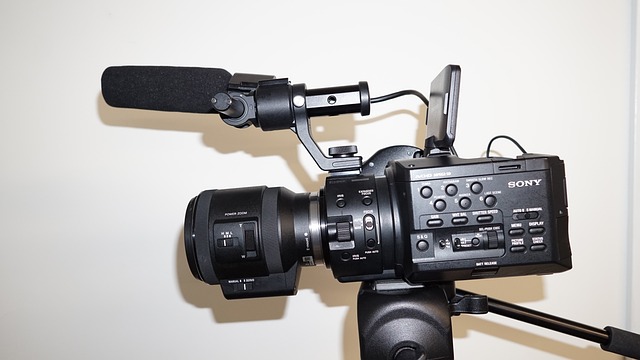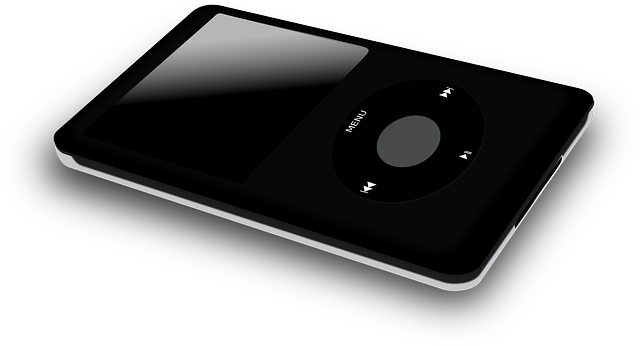The dynamic nature of digital video distribution necessitates format versatility to maximize reach and ensure compatibility across a myriad of devices. DivX and MP4 are two prominent formats that balance high-quality visuals with efficient compression. While DivX is favored for its superior compression using MPEG-4 Part 2 and H.264/AVC codecs, MP4's broad device support, including smartphones and streaming services, makes it a more universally compatible choice. To leverage the advantages of both formats, content providers often convert DivX videos to MP4, overcoming compatibility issues while maintaining high-quality output. This conversion process is facilitated by user-friendly software tools like HandBrake, Freemake Video Converter, or Any Video Converter, ensuring that viewers can enjoy seamless streaming or downloading experiences on any device. The shift towards MP4 has become a standard practice in the digital video ecosystem, enhancing global viewing experiences by providing a format that is both accessible and efficient for today's diverse and mobile-centric audience.
Understanding the Need for Video Format Flexibility in Digital Distribution

In the realm of digital video distribution, flexibility in video formats is paramount for broad reach and user satisfaction. The proliferation of devices—from smartphones to smart TVs—each with its own preferred format, necessitates a versatile approach to video encoding and distribution. For instance, users looking to enjoy their favorite content on various platforms may encounter compatibility issues if the video is only available in a single format like DivX. To mitigate this, converting DivX to MP4 has become a standard practice within the industry. The MP4 format, widely supported across diverse devices and media players, ensures that viewers can seamlessly stream or download videos without the inconvenience of format-specific limitations. This not only enhances user experience but also expands the potential audience for content creators and distributors, as they can cater to a broader spectrum of users without the constraint of a single video format. The ability to efficiently convert DivX to MP4 provides the necessary adaptability, making it easier for consumers to access high-quality videos wherever they are, on any device. This is particularly critical in an age where content consumption habits are increasingly diverse and on-the-go.
The Rise of DivX and MP4 Formats in Online Video Content

The digital video landscape underwent a significant transformation with the advent of the DivX and MP4 formats, revolutionizing online video content distribution. These formats emerged as superior alternatives to older codecs due to their efficient compression capabilities, which balance high-quality video with manageable file sizes, making them ideal for streaming and downloading over the internet. The rise of these formats has been pivotal in accommodating the burgeoning demand for video content across various devices and platforms. Users often seek ways to convert DivX to MP4 to ensure compatibility and optimization across different media players and storage systems. This conversion process is simplified by an array of software tools available today, which facilitate a seamless transition without compromising on video quality. The widespread adoption of DivX and MP4 formats underscores their role as game-changers in the realm of digital video distribution, enabling content creators and consumers alike to enjoy a smoother, more versatile viewing experience. Their prevalence is evident in how they have become the industry standard for streaming services, video hosting platforms, and personal media libraries, ensuring that video content is accessible and enjoyable for audiences worldwide.
Technical Insights: Differences Between DivX and MP4 Formats

Digital video formats such as DivX and MP4 have distinct characteristics that influence their use in various multimedia applications. Both are widely recognized for their efficiency in compression, allowing for high-quality video playback with smaller file sizes. The DivX format, developed by DivX LLC, is based on the MPEG-4 Part 2 and H.264/AVC codecs, offering impressive video quality. It’s particularly favored for its high compression efficiency and has been a go-to choice for movie studios distributing content online. Conversely, MP4, which stands for Moving Picture Experts Group-4, leverages the same H.264/AVC codec but is also compatible with the newer HEVC (High Efficiency Video Coding) standard. This adaptability makes MP4 a versatile format suitable for a wide range of devices and platforms, from smartphones to streaming services.
When considering converting DivX to MP4, users often prioritize compatibility and file size. The MP4 format is often preferred due to its broader device support and the potential for smaller file sizes without significant loss in video quality. Moreover, MP4 files are typically easier to edit and can be manipulated using various multimedia software tools. This makes the converted DivX content more accessible and adaptable to different viewing environments, enhancing user experience across various devices and applications. The choice between these formats often boils down to specific use-case requirements; however, for general video distribution, MP4 stands out due to its universal acceptance and efficient encoding options.
Why Convert DivX to MP4? Advantages and Use Cases

When the need arises to optimize digital video content for a wider array of devices and platforms, converting DivX videos to MP4 format becomes a pivotal step. MP4 is a widely supported multimedia container format that ensures compatibility across various devices, from smartphones and tablets to laptops and desktops, without the need for additional codecs. This conversion not only broadens the potential audience but also enhances playback quality by leveraging the efficient H.264/AVC codec often used within MP4 files. The H.264 codec is renowned for its balance of video quality and file size, leading to smoother streaming and faster downloads, which is particularly beneficial for users with limited bandwidth or storage space.
Moreover, the MP4 format is versatile in its use cases. It is the go-to format for online video platforms that require a balance between high-quality output and efficient streaming. Content creators and businesses can utilize this format for webinars, marketing videos, training materials, and e-learning courses, ensuring that their audience has unhindered access to high-quality content. Additionally, MP4’s adaptability makes it ideal for personal use, such as storing family memories or creating a media library that is easily shareable and playable across different devices without the hassle of installing additional software. The conversion from DivX to MP4 thus represents a significant upgrade in terms of accessibility, compatibility, and user experience.
Step-by-Step Guide: Efficiently Converting DivX to MP4 with Software Solutions

To seamlessly convert your DivX videos to MP4 format, a widely compatible and versatile video codec, utilizing software solutions is a straightforward process. Begin by selecting a reliable conversion tool that supports DivX to MP4 conversion; software options like HandBrake, Freemake Video Converter, and Any Video Converter are highly effective. Download and install your chosen converter onto your device. Once installed, launch the application and import the DivX file you wish to convert by clicking on the ‘Add File’ or equivalent button within the program.
After successfully adding your DivX video, select MP4 as the target format from the output options provided by the software. This choice is crucial for maximizing compatibility across various devices and platforms. A range of additional settings can be adjusted according to your needs, such as video resolution, aspect ratio, and bitrate, though these can be left at default values for a standard conversion unless you require specific tweaks for particular use cases. Proceed with the conversion process by clicking ‘Start’ or its equivalent command in the software interface. The progress of the conversion will be displayed, and upon completion, your MP4 file will be ready for use. Always ensure that your device’s specifications meet the requirements of the video you are converting to avoid performance issues. With these steps, converting DivX to MP4 becomes an efficient task, allowing users to enjoy their content across multiple devices with ease.
Best Practices for Video Conversion and Distribution in a Digital Landscape

In the realm of digital video distribution, converting DivX to MP4 has become a standard practice due to its wide compatibility across various devices and platforms. The process of conversion is pivotal in ensuring that content is accessible to all users, regardless of their preferred playback software or hardware. When converting DivX files to MP4 format, it’s essential to maintain the video quality without compromising on file size. Utilizing high-quality codecs such as H.264 during the conversion process helps in achieving a balance between clarity and file efficiency. Additionally, this conversion not only enhances playback versatility but also future-proofs the content, ensuring its longevity and accessibility. It’s crucial to use reliable video conversion software that can handle the task without introducing errors or artifacts.
Furthermore, once the conversion from DivX to MP4 is complete, distributors must optimize their videos for different platforms. This includes understanding each platform’s specifications and requirements, such as aspect ratios and bitrate limits. A comprehensive approach involves creating multiple versions of the video file tailored for various devices, including mobile phones, tablets, laptops, and smart TVs. Implementing adaptive streaming technologies like HLS (HTTP Live Streaming) or DASH (Dynamic Adaptive Streaming over HTTP) allows content to be delivered smoothly across different network conditions and screen sizes. By adhering to best practices in video conversion and distribution, creators can significantly enhance user experience and expand their digital reach.
In conclusion, the evolution of digital video distribution has been marked by the emergence of versatile formats like DivX and MP4. Recognizing the importance of format flexibility has paved the way for content creators and consumers alike to enjoy seamless access to a vast array of video content. The rise of DivX and MP4 formats, particularly in online spheres, reflects their superior compatibility and quality, making them indispensable for today’s dynamic digital landscape. Converting DivX to MP4 has become a pivotal step for users looking to optimize their media library for cross-device playback and storage efficiency. By following the outlined best practices for video conversion and distribution, content can be efficiently managed and accessed by audiences worldwide. Embracing these technological advancements ensures that digital video content remains accessible, relevant, and future-proof, catering to an ever-growing and diverse user base.
